Introduction
The new AMD’s Ryzen processors’ performance took everybody by surprise by taking us back to those times when the competition between AMD and Intel was much harder and when users were always introduced to better products at more attractive prices.
I do not know if it is already too late for AMD to go back to the position it had almost a decade ago, but Ryzen has undoubtedly given us back the hope for a less monopolized and more open PC world. Right now, no one doubts that Ryzen processors are a technical success, but it is too early to tell if they are also a commercial success since AMD does not provide sales figures. Today we will go over the progress that the product has made in the past few months, although it could not escape some controversy.
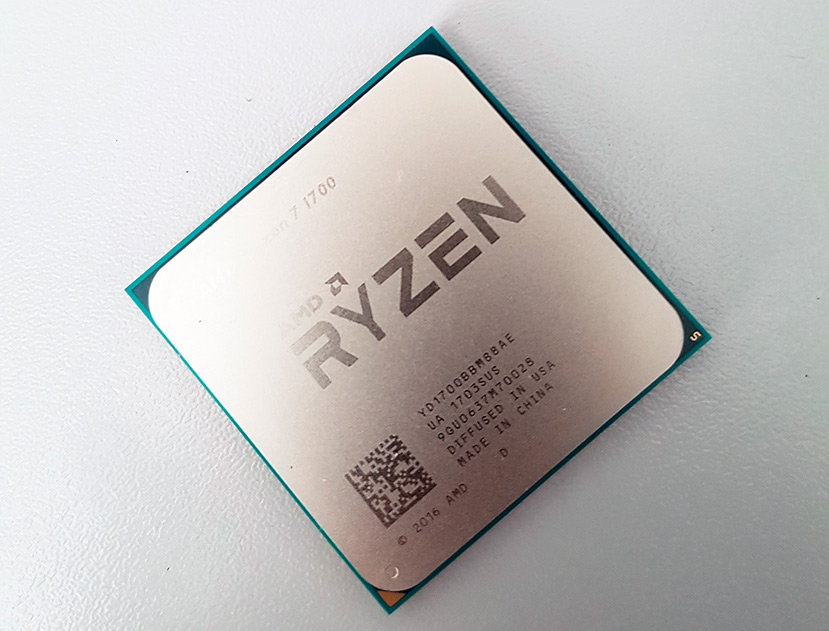
Software and programs optimization
Although x86 is a well-known architecture that has been around for some time, there is always room for resource optimization and performance improvement. All of this is usually done on several software levels where every one is equally, or even more important than the others.
AGESA (AMD Generic Encapsulated Software Architecture) updates. AMD has a Bootstrap microcode grid system integrated into its motherboards’ BIOS supporting these new processors. This is the path or the guide that motherboards have to follow to correctly boot the system, but in these processors’ case, this is an important element that can change the processor’s capacity in order to support memories that are more or less fast. Later on, we will dedicate an entire section of this review to this topic, but I will keep discussing other software optimizations first.
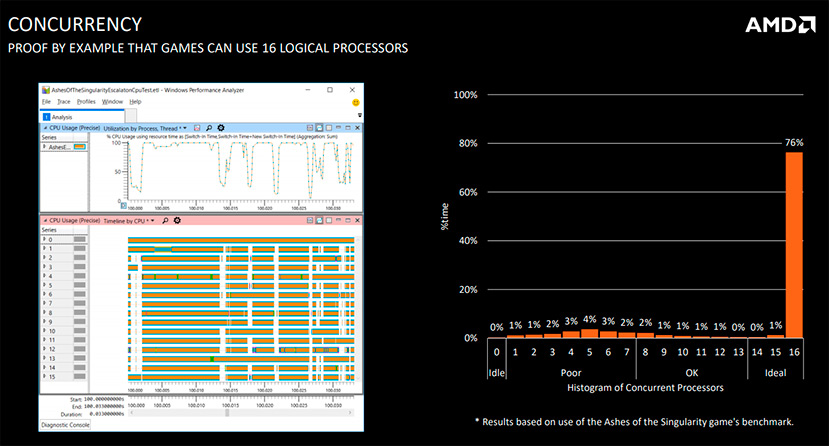
A fundamental step in order to take advantage of processing capacity is the adoption of compilers prepared for it.
Software improvements can come from improved drivers, programs or the OS. On the OS level, Windows 10 Creators Update, specifically some of the newer updates, has introduced performance improvements focused mostly on the system management done by the two-thread process per core that these processors have. This can provide a 5% improvement over the system’s general performance depending on the usage and the user.
AMD has even introduced power plans especially designed for its processors in order for Windows 10 to take maximum advantage of their performance while also introducing outstanding power management measures, turning the processors into very powerful, yet extremely efficient, products.
There still are some important elements that need to be optimized by making major changes in order to improve the performance when running any program on any architecture. Something extremely important to bear in mind is that program compilers, or virtual machines where programs are run, are designed to take advantage of the new processors’ capabilities.
Since the major compilers are already adapted, it is time to move on to the optimization of processors with an enormous processing thread count, which currently is 16 processing threads on 8 cores. The first step towards improvement has to do with how to balance the system load on a CPU-Complex (CCX) that has many threads, which is a step that many developers have taken for their programs. Optimizations in this regard have achieved significant performance improvements in many games and programs.
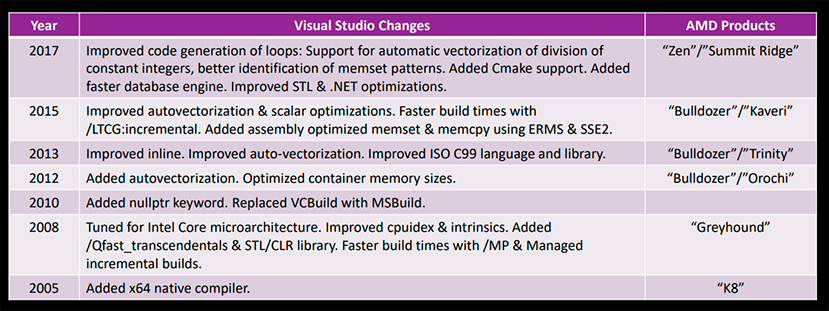
Visual Studio compiler improvement history
This used to impact these processors’ performance at low resolutions where the graphics card depends a lot on the data flow from the system’s CPU, therefore limiting the processors’ performance at a 1080p resolution in comparison to their competition.
That being said, the improvement on the DDR4 high-speed memory support, with AGESA’s updates, has been essential to achieve a higher bandwidth capable of transferring more data to the GPU, therefore allowing it to better exploit its own potential at low resolutions since the higher-end graphics cards’ bottleneck usually happens on the processor itself.
Several games have adapted their code in order to take greater advantage of these processors’ new support capabilities for high-frequency memories. Some of these processors show an improvement of up to 20% at low resolutions, bringing 8-core models closer to the performance provided by Intel’s 10-core processors.
Memory support improvements
AMD has updated the AGESA booting system for the Ryzen motherboards several times. We currently have the 1.0.0.6 version and we actually have been able to verify important improvements in high-speed memory support, although we also have to say that this does not have anything to do with the compatibility (either good or bad) between some memories and your motherboard.
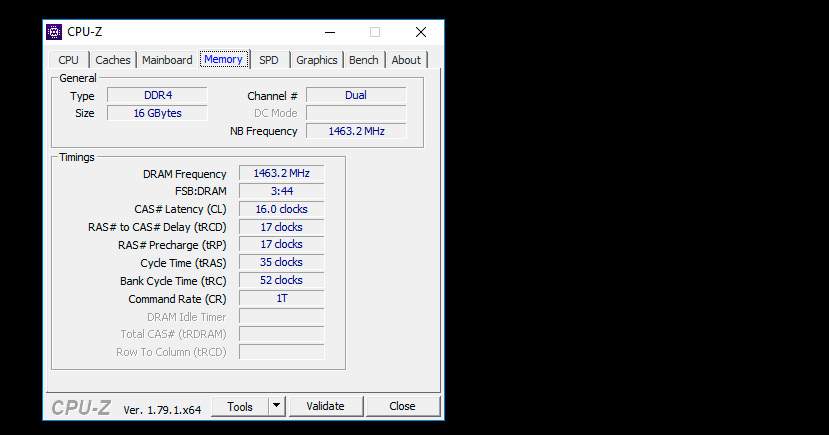
This update adds support for faster memories and leaves open the possibility of better adjustments in terms of timing, the most important being the Command Rate that AMD had blocked at 1T, which made compatibility difficult in modules with a higher overclock that usually use 2T as a way to take some pressure off the memory controller. Support for PCI Express connectors virtualization is also added, making computing and graphics easy for those wanting to use graphics cards in virtual machines.
Every time we update the motherboard’s BIOS, the AGESA gets updated as well, and nowadays it translates into major improvements for some applications, specially in those continuously using the system’s RAM bus. It also translates into important improvements for these processors’ performance when gaming at a 1080p resolution.
1080p performance: before and after
We have made some performance benchmarks, comparing them to previous benchmarks that we made for our Ryzen 7 1800X’s original review. These are the results that we got with the improved memory support, which allowed us to use 2933 MHz memories with their timing adjusted at 1T, taking advantage of our Corsair memories’ XMP. The improvements on 1080p games are certainly important, even more so in games that are specifically optimized for Ryzen, but we wanted to avoid them in this analysis in order to focus on the improvement gotten with a better memory bandwidth. The graphics card used for these results was a GeForce GTX 1080t.
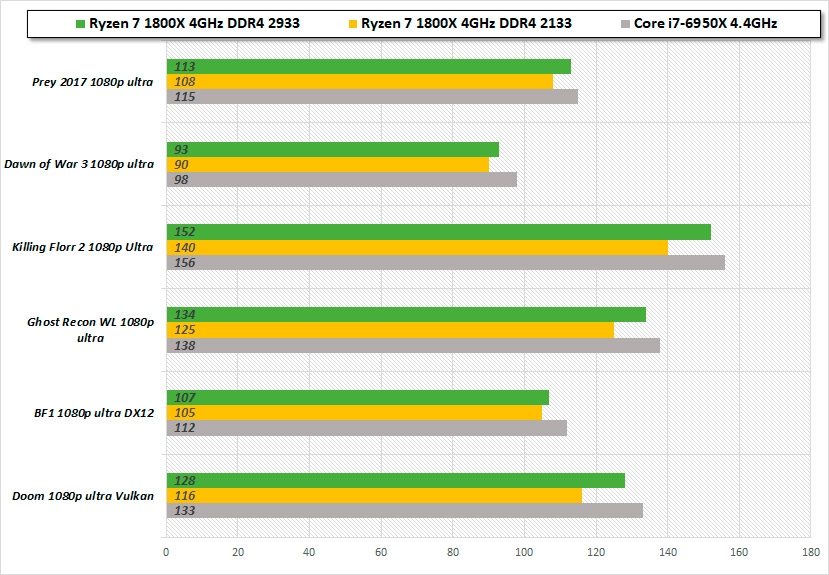
Conclusion
Ryzen, or rather its Zen architecture, marks a radical change for AMD’s x86 processors in terms of functioning, efficiency and performance. This required some adapting, thus finally bringing major performance improvements on processors that have amazed everybody and that have not shown their full potential on Threadripper processors yet since they are supposed to be launched before summer ends.
Read more
Best CPU Buying Guide
CPU bottleneck, everything you need to know